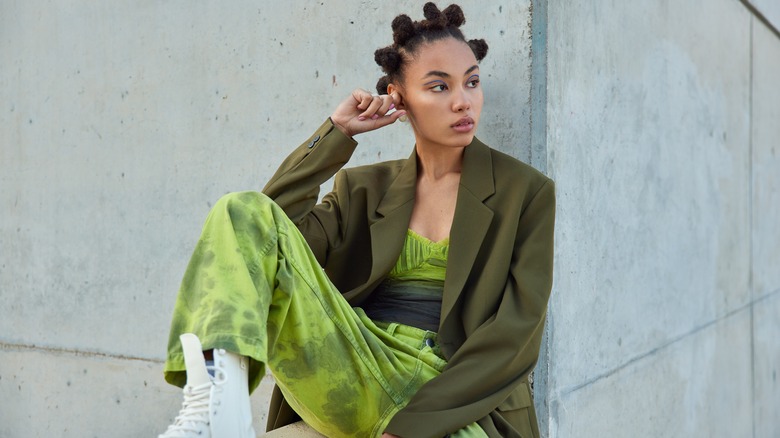International Women's Day: Display Your Power & Purpose In These Significant Colors
This International Women's Day, you're likely to see plenty of online and workplace statements about women's accomplishments and the work that is still to be done. Why not make a statement with your outfit, too? This symbolic day has been recognized for nearly fifty years, making it span many different movements and moments in history. While the first National Women's Day was celebrated in the United States at the end of February, it has since been moved to March 8. The first date was chosen in honor of the 1908 garment workers' strike, which advocated for better working conditions. The current March date has ties to women's advocacy during the 1917 Russian Revolution.
With such a rich history surrounding the day, you could style your March 8 outfit around any period, and you'd be paying homage to the hardworking women of that time. But if you need help establishing a color palette, we have some historical hues that make serve as inspiration. Pick your favorite or mix and match them into funky patterns — after all, you deserve to draw attention and show off your personality. Here's how to infuse more color and more meaning into your International Women's Day.
Red is the color of powerful people
Red has long been associated with power. We see the color hold significance in nations' flags, various spiritual beliefs, and eye-catching branding. Stepping out in a red outfit this International Women's Day makes a statement about the strength and power that women possess (and are worthy of possessing) in all areas of life.
Embrace your femininity with pink
Adobe notes that classic shades of pink feel "nurturing, playful, and nostalgic," with the color long holding feminine connotations. While some may instinctually choose to reject gender norms on this day — as is your right! — others might choose to embrace their femininity. After all, being seen as feminine isn't a bad thing! Wear pink to reject the notion that being a woman makes you any less significant in the spaces you occupy.
Purple was embraced by the suffragette movement
Purple is a bold hue that's long been associated with royalty. It's no wonder since it represented freedom and dignity during the suffragette movement in England. This colorful symbol of strength reminded the activists that they were worthy of the same respect afforded to the most powerful people in society. So, from soft lavender to bold plum, confidently rock your purple to show your own strength.
White is symbolic of good intentions
White is quickly associated with purity ... but don't worry — we're not talking about patriarchal purity here. Emblematic of integrity, white has previously been used by suffragettes to symbolize the purity of a movement, highlighting good intentions and hope for what is to come. Plus, white is known to make outfits look expensive and convey luxury. You deserve that!
Green is rooted in history
The final color that was welcomed into the suffragettes' triad was green. Green has long represented optimism for what is to come, relating to the final word in the British suffragettes' slogan: "Dignity, purity, hope." As a bonus, this color is perfectly on-trend for the season — with spring emerging around the corner, and St. Patrick's Day coming up.
Our favorite stars opted for black
Our final recommendation draws inspiration from the red carpet — but no, it's not red again. In 2018, attendees of the Golden Globes "blacked out" the runway in support of the #MeToo and Time's Up movements. At other award shows that season, black wristbands and pins were worn. Though years have passed, this fight is far from over — so, wear this hue to represent resilience.






